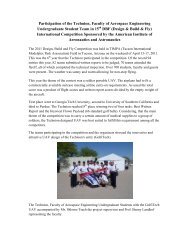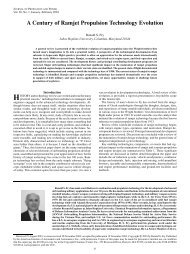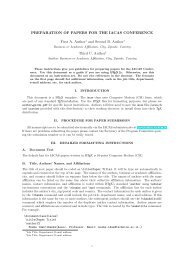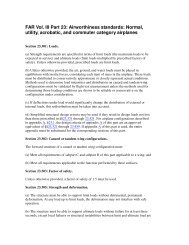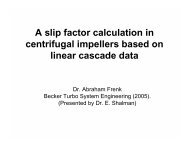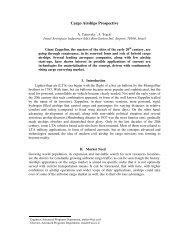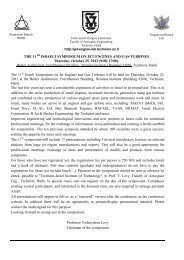BOOK OF ABSTRACTS - Faculty of Aerospace Engineering - הטכניון
BOOK OF ABSTRACTS - Faculty of Aerospace Engineering - הטכניון
BOOK OF ABSTRACTS - Faculty of Aerospace Engineering - הטכניון
Create successful ePaper yourself
Turn your PDF publications into a flip-book with our unique Google optimized e-Paper software.
Lecture #11<br />
Background<br />
Computerized Micro Jet Engine Test Facility<br />
Vladimir Krapp,<br />
Turbo & Jet Engine Laboratory, Technion<br />
svladk@t2.technion.ac.il<br />
Micro jet engines are recently used more significantly in model airplanes, UAV as well as for<br />
different glider applications. We, at the Turbo & Jet Engine Laboratory, decided to incorporate<br />
several test stands with micro jet engines because the ability to use them in <strong>Aerospace</strong> education, as<br />
affordable experimentation platforms and their usage in high-end recreational model airplane<br />
building.<br />
The facility built includes a fully computerized propulsion system, integrating the engine control and<br />
the measurement <strong>of</strong> all operation and thermodynamic parameters. An Olympus micro jet engine,<br />
manufactured by AMT Holland has been installed at the facility as a representative <strong>of</strong> its class. The<br />
engine is instrumented to allow measurement <strong>of</strong> temperatures and pressures along the gas path. The<br />
control and data acquisition system allows easy expansion through the use <strong>of</strong> multi-channel data<br />
acquisition cards and modular s<strong>of</strong>tware built in the LabVIEW programming environment.<br />
An experiment study that was able to successfully demonstrate the capabilities <strong>of</strong> the system is<br />
presented in the current talk: the measurement <strong>of</strong> thermal characteristics <strong>of</strong> the exhaust jet <strong>of</strong> the<br />
engine. In order to accomplish this, a set <strong>of</strong> external probes (temperature, pressure and gas<br />
composition) mounted on a computerized X-Y traverse system was added to the system. The<br />
different sensors' data were recorded by the same program controlling the engine’s operation, and a<br />
s<strong>of</strong>tware module, allowing traverse control through a step motor controller unit was added to the<br />
main s<strong>of</strong>tware package. A thermal camera was used to record the thermal radiation from the gaseous<br />
jet, and the data correlated at the end <strong>of</strong> the experiment to that acquired by the probes. The<br />
measurements were in good accordance with the theory <strong>of</strong> free jet behaviour.<br />
Conclusion<br />
The facility has proven a valuable addition to the Jet Engine Laboratory’s research capabilities.<br />
Future experiments planned include examination <strong>of</strong> the effect <strong>of</strong> inlet obstructions on engine<br />
performance, incorporation <strong>of</strong> variable nozzle and thrust vectoring, afterburner and more. Upgrading<br />
the system to allow testing <strong>of</strong> real time engine control algorithms is also in the works.<br />
18







